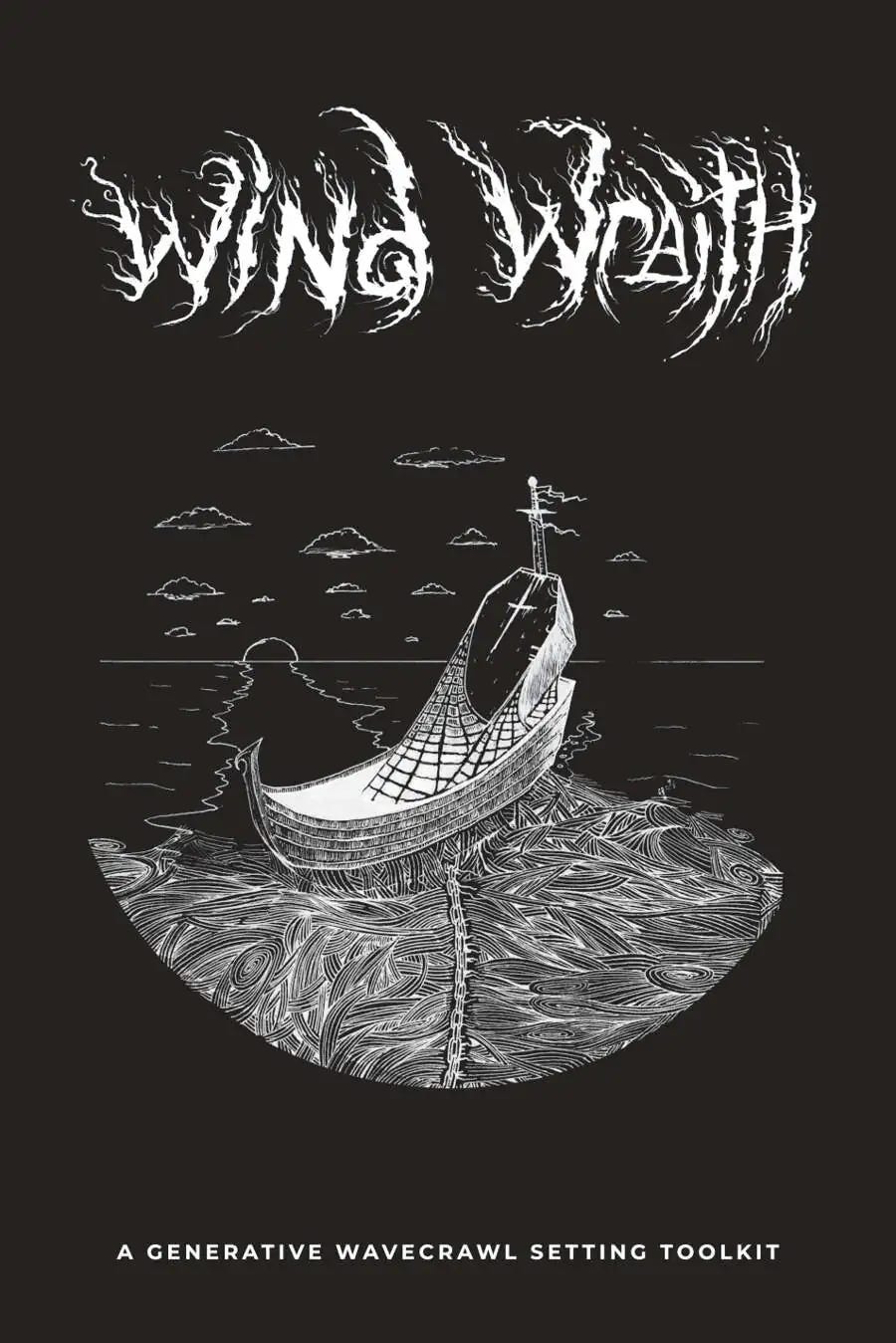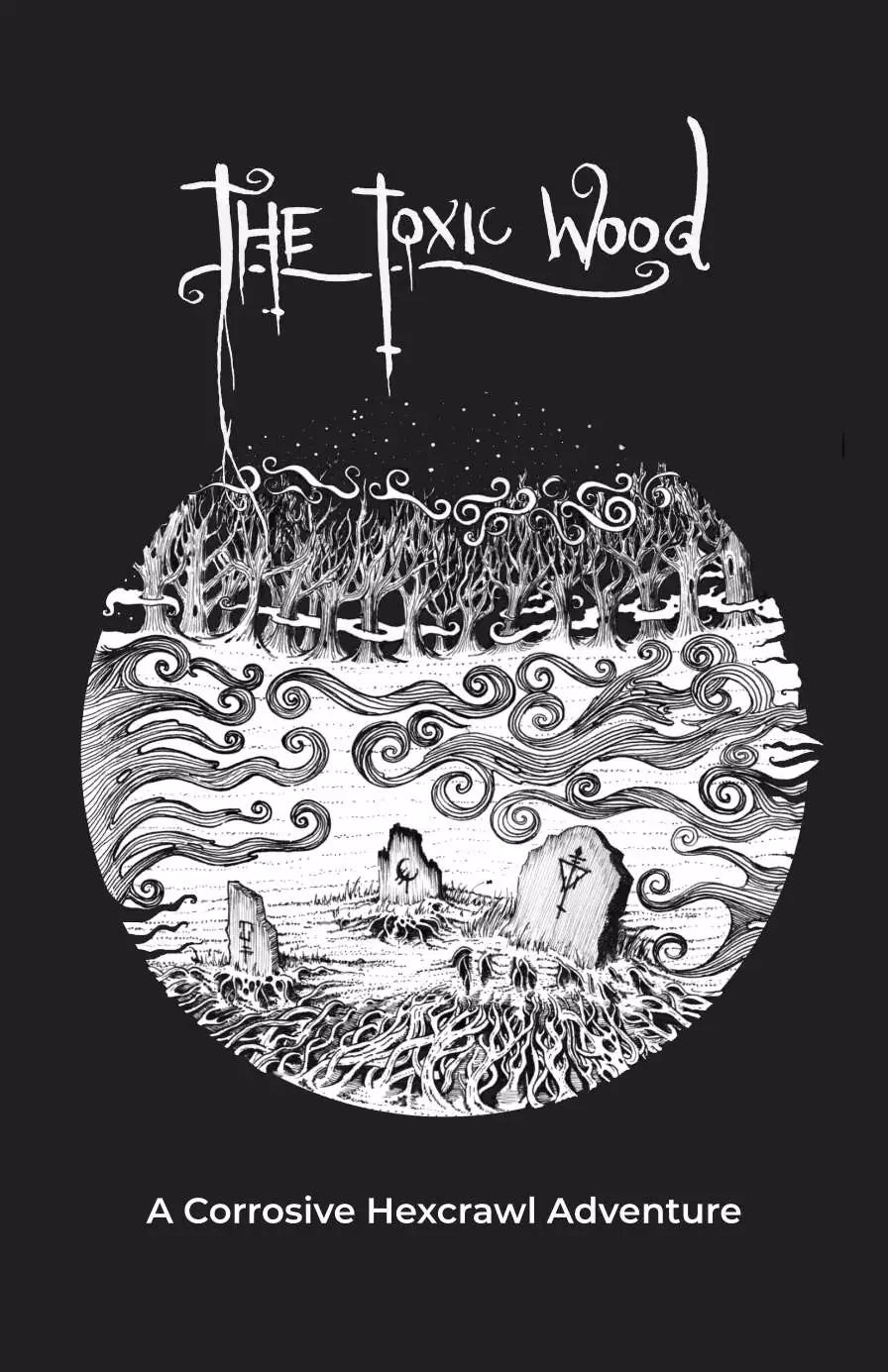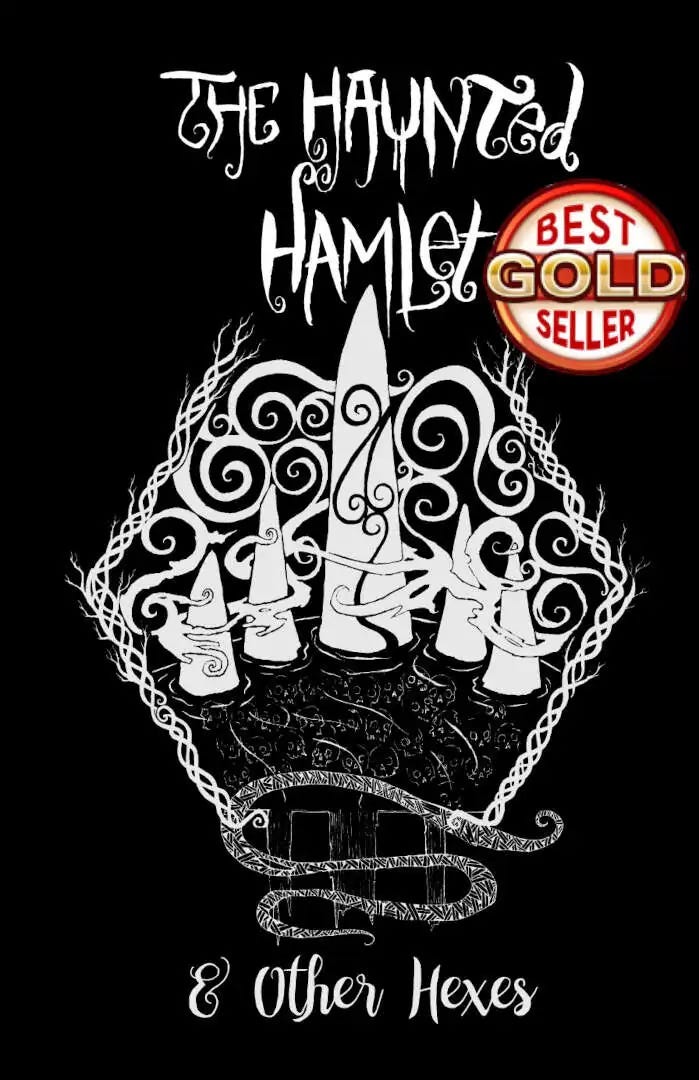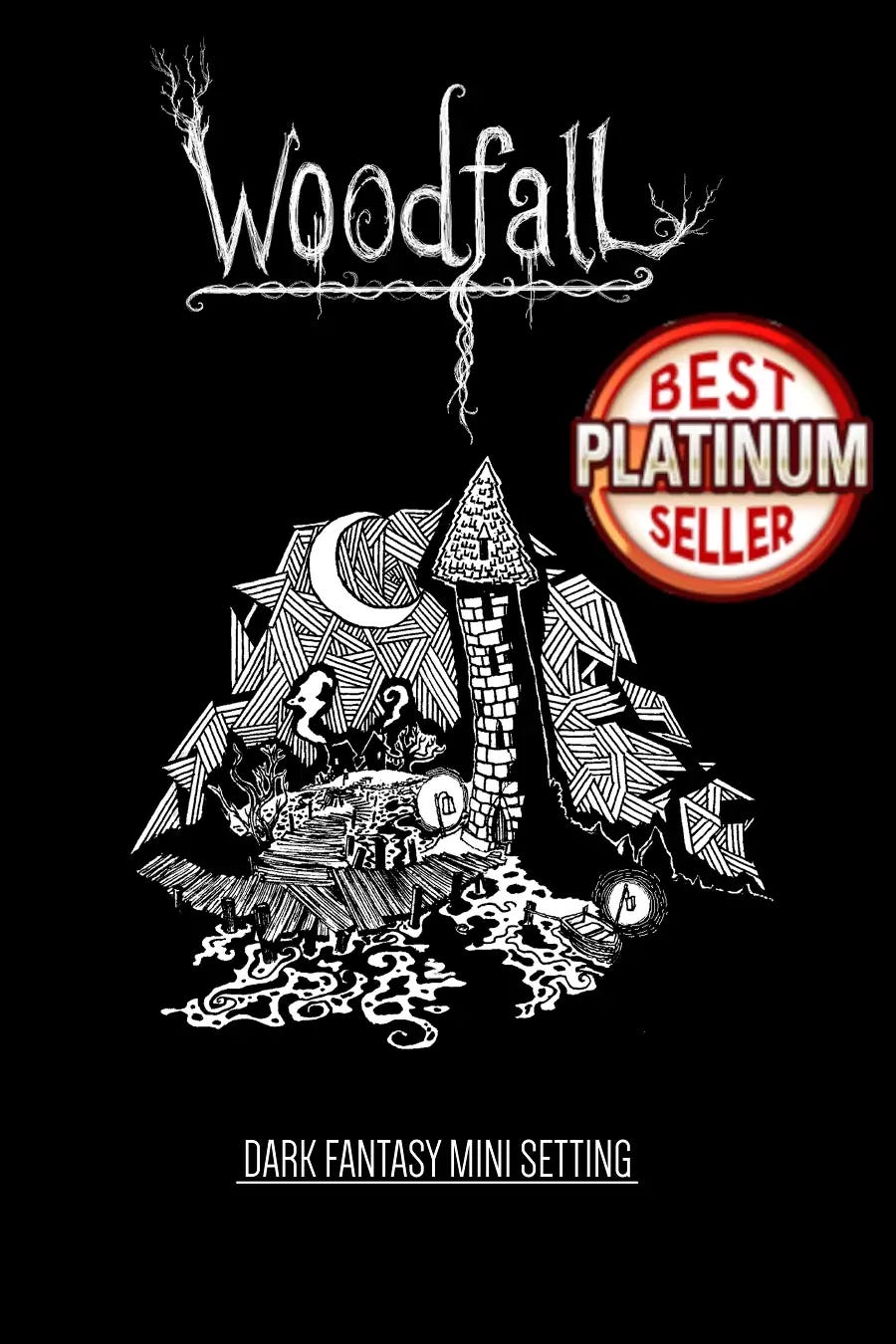Note: Where I can, I will provide art from the book, but I will only be quoting it in short bursts where I need a specific example, or find the prose to be especially evocative. My intent is to give my thoughts on the setting, layout, and design principles behind this piece of work, and not to replicate it here . If you are interested in this work I have also provided Affiliate Links to DriveThruRPG for the PDF.
Similarly, this is not a critique of the product, I haven't run it. However, I will touch on issues I think that you might find while running Wind Wraith for yourself. If you are interested in my explanation for the difference between a review and a critique for TTRPG's, you can find it here.
This probably won't shock many people, but I love a sick piece of art. Who doesn't? Good art can communicate through implication and suggestion, hinting at a world beyond what will ever be described amongst a books pages. It's a tone setter, something to help douse the imagination in lighter-fluid while the text of a book lights the match.
When I say Lazy Lich products have some of the best art I've ever seen then, it is high praise. I don't mean to say "within the OSR," or even "within TTRPG's" I mean Lazy Lich products are absolutely bleeping gorgeous. No qualifiers needed. From Willow to Toxic Wood, Lazy Lich makes fantastic, evocative artwork without exception. So too, his settings are equally evocative, dripping with character and style. They are mood pieces, strange and bizarre fairy tales that ask questions like "What if a functioning town of anarcho-communists popped up on the border of a traditional fantasy kingdom?" or "what if a gloomy town of fishermen were threatened by an army of rat-men and undead plants?" However, those projects were simple, self-contained settings and adventures. They weren't a toolkit. So, I was curious as to what Wind Wraith would actually look like. Well, there are two parts to it.
The first part is a loose kind of setting that is wild, whimsical, and threatening, similar to his other work. However Wind Wraith is much better written than previous entries, and while the whimsy remains it has been dialed down significantly. This results in a setting that is less "weird fairy-tale" and more "If Shirley Jackson wrote the Cthulhu Mythos after the events of Noah's Ark, but D&D." It's dark, it's eerie, and it feels haunting and sad in way that most OSR material doesn't. This is a tired world, a strange world, a world that hasn't quite died, but is circling the drain and awaiting it's reincarnation. You won't find characters like the lazy River Ranger (Willow) in this book. Instead everything is grounded in a watery apocalypse.
The second part is the tool kit for constructing this setting, and it is just as good. The creation of an ocean, and then each of it's seas is left to the GM, following a basic formula: Every ocean has one or more seas, every sea has a handful of islands, a trade hub, and a Tyrant. Every island has points of adventure. Everything has a sheet for easy organization, and there are rich flavorful tables for filling out every one of those sheets. It's gorgeous, impressive, and complete, to the point where if you are even considering an OSR ocean campaign that isn't pirate themed, you need this book. Hell, even if it is pirate themed you can still use the tools in here for Naval combat, shipbuilding, creating rival crews, getting marooned, and underwater exploration. And that isn't counting the two new classes, a reskin of the magic user to better fit an ocean campaign, potion recipe's, and a lot more. I really cannot express how wonderful of a product this is.
But, (and it pains me to say this) Wind Wraith has a (small) layout problem. I know, I know. I'm a snob and these are nitpicks. You aren't wrong. The layout issues here aren't nearly as baffling as the ones in Ultraviolet Grasslands (which if you missed it you can read my post on it here). Here's the thing though: while the book is beautiful, there are plenty of pieces that aren't as well integrated as they could be.
The Tyrant's section (Page 33) is where the layout first begins to break down. The Tyrant Generation Table looks like it was meant to be a two page spread. Instead I have to turn the page to see the second part of the table. This has a spill over effect on the Tyrants themselves who all use 3 page spreads before finishing up with the Carrion King who uses a 4 page spread. It's inconsistent and forces some page flipping. I'd rather have seen them all use 4 page spreads, with more detail given to their resources and troops. Also the Trident Queen is missing a statblock for some reason.
Then you have the tools section, which seems to be a grab-bag of stuff that couldn't be made to fit in the sections that they actually made sense in. For instance, Wind mages could have been spun out into a full class, instead it's the OSE magic user with a modified spell list. It feels like it should have been fleshed out, moved to character creation, and given a two page spread. Instead it's shuffled to the back with only a single page. So too with the with the "People of the Deep" It feels like this was meant to be a class with one page of lore and one of class details. Ketoskrill and the Capillary City feels cool, but it isn't a tool. It's a setting piece that feels like it should have either been better integrated or dropped entirely.
Don't get me wrong. These are small things, tiny things even. But they drive me up the wall because Lazy Lich's earlier work didn't have this issue. Woodfall and Willow both had everything on a two page or four page spread. If Shane couldn't make it work in an even spread, he either had the next page be a one page spread, or he had a piece of art to make up the difference. Here, the art is still excellent, but occasionally its placement sabotages otherwise excellent layout. And that is disappointing.
But, I know why the book is this way. I get it. Wind Wraith isn't necessarily meant to be used at the table. Instead, some of it's sheets are meant to be printed off and thrown in a binder, filled out and organized according to what a night's play really needs. The tables don't all have to be a 2 page spread, because they aren't meant to be rolled on 'Live.' Ultimately, all of my issues with layout could be solved with more. More writing, more art, more this, more that. Once again, I am left wanting more. And that's not a bad feeling for a book to leave me with. Shane isn't wrong for choosing this layout. You can only print so many pages at a given price point and Wind Wraith is already delivering twenty more pages than the kickstarter promised. There has be a cut off. Wanting more is just me being greedy, especially if it means expanding the book another twenty pages.
Nitpicks aside, this book is excellent, and I highly recommend it to those looking for a darker, ocean-themed game. Just be aware that this will require a little elbow grease to run. It's a setting toolbox, not a setting in and of itself. You will need to print off a couple of pages for your players and you will need to be organized in order to best take advantage of what Wind Wraith has to offer. But if you do, I am willing to bet that you are in for a glorious treat.
If you are interested in picking up Wind Wraith, or any of Lazy Lich’s other offerings you can find them (and support me) at the DrivethruRPG affiliate links below:












